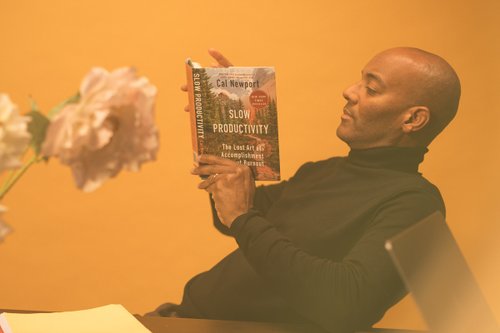Why your vote matters: The impact of worker activism on historic labor legislation
May 29, 2024
8 mins

JB
Writer, translator and journalist
On November 5 this year, America will vote to choose its president for the next four years as well as representatives for the 119th Congress. However, with many disenfranchised voters, some may be questioning whether there’s any point in casting a vote at all.
Our vote holds power, and that power can change the way we work and the conditions in which we do so. History has shown us that, when voters come together under a common goal, major legislation can be passed that can change the course of history—and, the future of work.
The National Labor Relations Act of 1935
Last year saw the highest number of labor strikes in recent memory. Whether it was the labor disputes in Hollywood or the United Auto Workers strike, workers across the country took to picketing to demand better working conditions. In fact, last year, 16.7 million days of work were lost due to industrial action, which ultimately resulted in historic deals being reached.
However, striking and unionizing has not always been a federal right. Enter the National Labor Relations Act in 1935.
“Before the NLRA, workers had no protection if they tried to unionize and could be fired,” says Ellen Dichner, labor law lecturer at the Cuny School of Labor and Urban Studies. “What’s more, in the 19th century, workers who tried to join together to improve working conditions could be convicted of conspiracy.”
It was against a backdrop of mass unemployment and exploitation during The Great Depression that workers fought against oppressive conditions. “In 1934, there were major strikes including a general strike in San Francisco, where workers utilized the power they had,” Dichner says.
Therefore, in 1935, the National Labor Relations Act was passed, which states that “employees shall have the right to self-organization, to form, join, or assist labor organizations.” It made provisions for workers to bargain collectively and to protest poor working conditions without fear of reprisals.
“The passage of the National Labor Relations Act, combined with worker militancy, resulted in a huge expansion of unionization in the United States,” Dichner says.
In the years that followed, union affiliation skyrocketed, with over 30% of private sector workers belonging to a union during the 1950s. Since then, union membership has experienced a steady decline. In 2023, the figure stood at just 6%. However, unionization is seeing a revival. Union petitions have increased 35% while membership among Black and Latino workers has also increased.
The NLRA does have its limitations though—as illustrated by recent attempts by Starbucks and Amazon to thwart unionization and collective bargaining. “The NLRA has weak remedies and so is violated broadly,” Dichner admits. “Major companies have the resources to keep fighting to avoid recognizing and bargaining with unions that their employees selected.” All the same, she remains optimistic—pointing to recent successes.
“Starbucks workers just kept organizing and organizing, and they’re now beginning discussions for a collective bargaining agreement.”
So, although weakened in today’s world of globalization and huge corporations, the National Labor Relations Act is still a formidable ally of workers’ rights today.
The Fair Labor Standards Act of 1938
A basic tenet of work is the exchange of labor for payment. Likewise, it is generally accepted that a work week amounts to 40 hours. However, you may be surprised to know that the latter is rooted in the Fair Labor Standards Act that was signed in 1938 by Former President Franklin D. Roosevelt.
Once again, born during The Great Depression, the FLSA set out to prevent abusive payment practices with a federal minimum wage of 25 cents per hour and a maximum work week of 40 hours. Importantly, it also established the concept of overtime at a rate of time and one-half the regular rate of pay, while also defining the term “oppressive child labor” to protect minors.
Fast forward to 2024, the Fair Labor Standards Act is still in force—although it has been superseded by state laws that now provide higher minimum wages thanks to pressure by fast food workers in the Fight for $15 movement.
“The FLSA is a limited act. The current rate of $7.25, implemented back in 2009, is absurd,” says Dichner. “But whatever the minimum rate is, there’s a lot of wage theft in this country with a lot of overtime not being paid for. So, I wouldn’t want to belittle the importance of the act, which provides a legal avenue to recover unpaid overtime wages.”
There is currently a proposal pending in Congress to raise the federal rate to $15 in 2025. However, with the four-day work week sure to become more common over the coming years, legislation will also be needed to address the fact many won’t be working 40-hour weeks.
The Civil Rights Act of 1964
Over the past decade, there have been renewed efforts to call out discrimination and harassment—both in the public arena and the workplace. The most striking examples being #MeToo and BlackLivesMatter. But it was Title VII of the Civil Rights Act of 1964 that first prohibited discrimination in employment based on race, sex, and other protected characteristics.
As Jessica Childress, attorney and founder of The Childress Firm PLC, says, “The Civil Rights Act cannot be quantified in terms of its impact on equal rights in the workplace.” She explains that even today when arguing a discrimination case, she still relies on Title VII to back her argument.
It’s important not to forget though, as Childress highlights, that the Civil Rights Act was enacted after years of activism and widespread violence. “Before 1964, there was rampant and overt discrimination in the US, Jim Crow segregation laws, Brown vs. Board of Education, Kennedy had just been assassinated, etc. The nation was demanding change.”
But, as Childress explains, the act does indeed have its limitations today. “Title VII doesn’t cover microaggressions, which are much more common, insidious, and harder to prove.”
Studies have shown that women are twice as likely as men to be mistaken for someone junior or have their emotional state questioned at work. And, women of color are 5.5 times more likely to be confused for someone else. As a result, women are more likely to change their behavior to try and fit in, making it harder to take risks or propose ideas in the workplace.
What’s more, gender and racial pay gaps still persist, highlighting ongoing discrimination at a national level.
All the same, the act remains a watershed piece of legislation. “The Civil Rights Act leveled the playing field for marginalized people in the US and ensured they weren’t being kept away from economic opportunities—specifically employment,” Childress concludes.
The Occupational Safety and Health Act of 1970
According to official labor data, in 2022, a worker died every 96 minutes from a work-related injury. A shocking figure, and yet still a drastic improvement from the 1970s. In fact, between 1971 and 2000, despite being a period where US employment nearly doubled, workplace fatalities were cut by 60%.
This was largely thanks to the passage of the Occupational Safety and Health Act of 1970. This bipartisan legislation was introduced by lawmakers in response to high injury and fatality rates in the workplace in the decades prior. It sought to protect workers, increase safety, and prevent injury.
The act also established the Occupational Safety and Health Administration, which today enforces compliance and provides guidance on a host of employment risks from stress to physical on-the-job injuries.
But, despite its proven track record of protecting workers, Dichner believes enforcement of the OSH Act is an issue due to “ludicrous” penalties. She says, “People die on the job and some of these deaths are deemed willful. This is to say employers know workers are being subjected to hazardous working conditions.” She points to the fact that the maximum fine for a willful or repeated violation is just $161,323, while for a serious violation, it’s just $16,131. “The only prosecution is a misdemeanor, not a felony. For basically murder. So, it’s a very weak law,” Dichner says.
Attempts have been made to drastically increase penalties, but these are still yet to materialize.
The Family Medical Leave Act of 1993
Civilization has only continued to exist through generations of childbirth. It can therefore seem perplexing that until 1993 there was no federal provision for parental leave. However, with the passage of the Family Medical Leave Act, this all changed.
The FMLA was essentially groundbreaking as it provided 12 weeks unpaid leave for the birth of a child. It also allowed workers to take time off for serious health conditions or to look after a loved one who was sick. Last year, the act celebrated 30 years, and since its inception has been used an estimated 463 million times on the grounds of health. It has undoubtedly improved the lives of US workers.
Jessica Hart, a HR consultant, says, “The FMLA was revolutionary in the fact that it took some power away from companies, who could before just get rid of you and hire someone else.” She adds that it was also written during the AIDS crisis and “at a time when people’s medical conditions were being acknowledged.
However, despite it being revolutionary, she believes the FMLA is no longer fit for purpose.
“The FMLA needs to be rewritten to match post-COVID life and remote working,” she says. This is because to be eligible for FMLA, an employee needs to work at a location that has 50 employees within a 75-mile radius. “This doesn’t match the workplace today,” Hart says. Likewise, the US remains one of the only major economies that doesn’t provide paid parental leave as a universal right.
Once again, an act that was written in a different world is still being applied today.
Drawing battle lines for the future
Next year will mark the end of the first quarter of the 21st century. And, with some of these acts being in force for nearly 90 years, they’re clearly in need of an update that reflects modern working. In the coming years, this may just happen.
Dichner speaks of the Protecting the Right to Organize Act (PRO Act), which aims to give more power to workers and labor unions, such as prohibiting the permanent replacement of strikers, removing limitations on secondary strikes and preventing the misclassification of workers as independent contractors. Likewise, it would eliminate barriers to quick unions and strengthen employer penalties for unfair labor practices. The bill has already been passed in the House but has since stalled in the Senate.
For Childress, she believes that diversity, equity, and inclusion will become a hotly contested topic in the near future, citing the 2023 Supreme Court ruling banning affirmative action in college admissions. “There will definitely be some case law in the future regarding affirmative action in employment,” she says.
Likewise, she believes that the recent ruling by the FTC banning employers from giving workers noncompete agreements could also be contested in the courts. But she says, “for now, workers have more freedom to be mobile, and this leads to more economic opportunity and equality.”
Hart, on the other hand, believes that the separation between hourly and salaried workers will become a hot issue. “Most people on salaries are not paid overtime or have mandatory lunches and breaks. That’s getting a lot of traction right now.” She also reckons that there will be increasing debate over hybrid working or onsite working, given that many young people who studied remotely during and after the COVID pandemic will be soon entering the workforce.
Around the world, many countries are starting to enact groundbreaking legislation to reflect modern-day living and understanding such as Australia’s right to disconnect law and Spain’s menstrual leave law. This is not to forget that legislation will eventually have to be introduced to address the rise of AI and its impact on workers.
Ultimately though, as Dichner says, “In the United States, unless you have mass movements, nothing changes. Leaders only enact legislation because it will be worse for them if they don’t. The NLRA was passed out of a fear of communism and socialism. And because capitalism was on rocky ground.”
With roughly 244 million people eligible to vote in the election later this year, your vote may feel worthless. But when it’s part of a movement for change, it can be a catalyst for enacting legislation that will span decades into the future.
Photo by Thomas Decamps for Welcome to the Jungle
Follow Welcome to the Jungle on Facebook, LinkedIn, and Instagram and subscribe to our newsletter to get our latest articles every week!

More inspiration: Future of Work

The Bear: When professional passion turns toxic
Carmy's workplace trauma isn't unique...
Dec 31, 2024

The youth have spoken: South Korea’s push for a four-day workweek
Is this the end of Korean hustle culture?
Dec 26, 2024

Cal Newport's Slow Productivity: Redefining success in a hustle culture
Is slowing down the key to achieving more?
Dec 19, 2024

Wellbeing washing: Are workplace mental health apps doing more harm than good?
Workers are struggling with mental health. Are employers approaching it the right way?
Dec 19, 2024

Dark side of DINKs: Working as a childfree adult
Having children comes with challenges. So does choosing not to.
Dec 11, 2024
Inside the jungle: The HR newsletter
Studies, events, expert analysis, and solutions—every two weeks in your inbox

